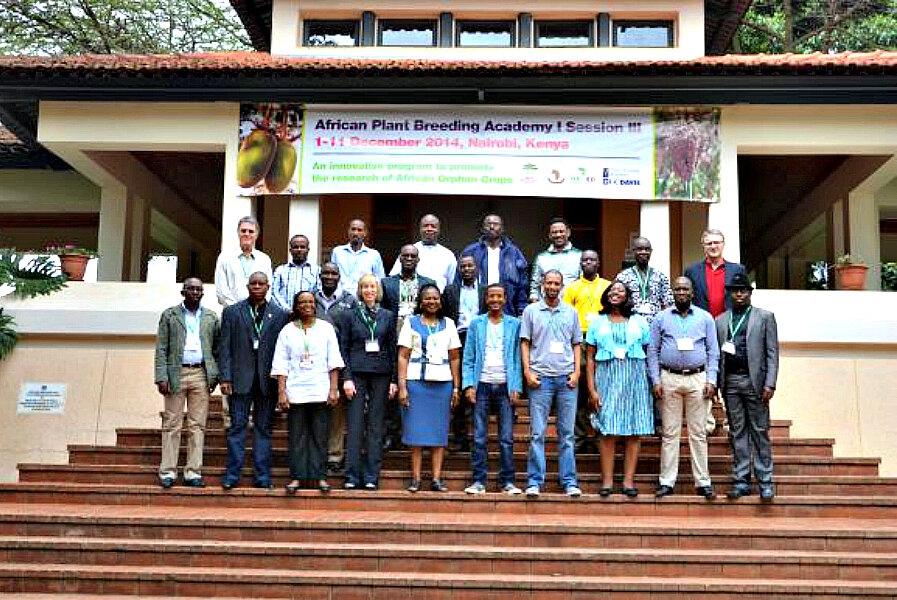These graduates are primed to reduce world hunger
Loading...
Twenty-one students from 11 countries and 19 institutions across the continent were the first class to graduate from the African Plant Breeding Academy (APBA) in Nairobi, Kenya, in December. Now that these students have returned to their respective countries, they are on a mission: to grow more and better plants for their communities.
Specializing in the study of “orphan crops”—crops that are often overlooked in the global marketplace but can be highly nutritious—the students are aiming to introduce them to resource-poor societies. The work from the academy has the potential to greatly reduce the rates of hunger and malnutrition in Africa, which lead to problems with physical and cognitive development among children. According to the World Bank, nearly 60 million children are underweight in Africa, and up to 16 percent of the continent’s GNP is lost each year because malnourished youth grow up to be less productive adults.
The APBA’s program, hosted by the World Agroforestry Centre, takes place over three two-week sessions in a year and is championed by the University of California, Davis. Some of the world’s most renowned plant breeders teach at the academy, explaining cutting-edge theories in biotechnology—some of which haven’t been verified in the United States yet—and putting their students at the forefront of research.
“My experience was quite good,” said Busiso Mavankeni, a former agronomist turned plant breeder from Zimbabwe. The collaborative environment brought breeders from across Africa together in what may be the first meeting of its kind.
“Usually it’s very difficult to meet breeders who work on these minor crops,” she said. “We had the opportunity to meet and share experiences. We are communicating beyond this program.”
Because orphan crops are mostly indigenous, they tend to be resilient in the face of environmental stresses and adaptable to local conditions. It is these culturally and locally relevant plants that are the focus at the academy.
Each breeder came with a specific project. Mavankeni, for example, is working with the Bambara groundnut, grown by nearly 70 percent of small-scale farmers in Zimbabwe. Even though the crop can tolerate harsh conditions and is highly nutritious, it has rarely been studied.
At the academy, Mavankeni worked on shortening the groundnut’s growth cycle: The crop currently takes about 140 days to reach maturity, but through her research and experiments, she was able to shorten the cycle to between 90 and 120 days, a promising result for higher crop yields in the future.
The academy grants the students access to the laboratories and facilities necessary for their work.
“I have been given the tools,” she said.
Godson Nwofia is an associate professor from the Michael Okpara University of Agriculture in Nigeria. His work is centered on the cocoyam, a root vegetable with very little documented research. “If you go to the Internet, you get little or no information,” he said. “If we do not work on it, how will we recover it?”
Among other traits, the cocoyam is a critical weaning food, with a starch more digestible than a yam or cassava. However, it grows erratically and is difficult to hybridize, something Nwofia is working on. “If we do not create variation and the crop remains a clone, any disease can come and it is gone,” he said.
International development agencies agree that breeding is crucial to ensuring food security, and crops that are grown must be high-yielding; resistant to pests, diseases, and drought; and able to be regionally adapted to different environments and growing conditions.
One of the primary concerns associated with modern plant breeding is that the focus on increasing yield traits can decrease nutritional value. However, “the approach is not to create GMO orphan crops but to expedite conventional breeding methods with knowledge of orphan crop genomes,” the World Agroforestry Centre said in a statement addressing the concern.
Reflecting on the recent graduates, academy director Rita Mumm said, “I was really impressed with the savvy, the diligence, the smarts, and the energy of the scientists that came. They are really hungry to learn.”
• Amanda Sperber is a journalist, strategist, and entrepreneur based in East Africa.
• This article originally appeared at TakePart, a leading source of socially relevant news, features, opinion, entertainment, and information – all focused on the issues that shape our lives. Visit takepart.com/start-from-the-source.







